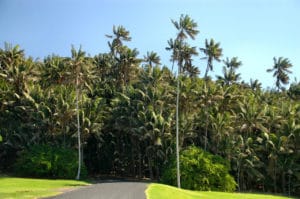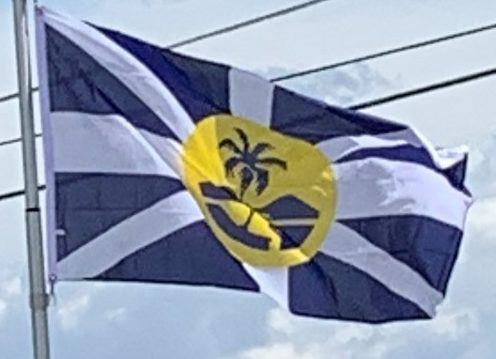
To the north there is the Admiralty Group, a cluster of seven small uninhabited islands. Just off the east coast is 11 acre Mutton Bird Island, and in the lagoon is the 7.4 acre Blackburn (Rabbit) Island.
Economy:
Trading vegetables, meat, fish and other perishables with visiting ships ceased in the 1870s when the whaling industry collapsed. With such a small population, Lord Howe Island’s economy is now extremely simple with external income derived from only two significant sources: tourism and the overseas sale of kentia palm seeds and seedlings.
Kentia Palm Industry:
The first exporter of palm seeds was Ned King, a mountain guide for the Fitzgerald surveys of 1869 and 1876, who sent seed to the Sydney Botanic Gardens. Overseas trade began in the 1880s when it was found that one of the four palms endemic to the island, kentia palm (Howea forsteriana), which grows naturally in the lowlands, was ideally suited to the fashionable conservatories of the well-to-do in Britain, Europe and the United States, but the assistance of mainland magistrate Frank Farnell was needed to put the business on a sound commercial footing when in 1906 he became director of a company, the Lord Howe Island Kentia Palm Nursery, whose shareholders included 21 islanders and a Sydney-based seed company. However, the formation of the Lord Howe Island Board of Control was needed in 1913 to resolve outstanding issues.

The native kentia palm (known locally as the thatch palm as it was used to thatch the houses of the early settlers) is now the most popular decorative palm in the world. The mild climate of the island has evolved a palm which can tolerate low light, a dry atmosphere and lowish temperatures—ideal for indoor conditions. Up to the 1980s the palms were only sold as seed but from then onward only as high quality seedlings.
Seed is gathered from natural forest and plantations, most collectors being descendants of the original settlers. Seed is then germinated in soil-less media and sealed from the atmosphere to prevent contamination. After testing they are picked, washed (bare-rooted), sanitized and certified then packed and sealed into insulated containers for export. They grow both indoors and out and are popular for hotels and motels worldwide. Nursery profits are returned to enhance the island ecosystem. The nursery plans to expand the business to include the curly palm and other native plants of special interest.
Tourism:
Lord Howe Island is known for its geology, birds, plants, and marine life. Popular tourist activities include scuba diving, bird watching, snorkeling, surfing, kayaking, and fishing. To relieve pressure on the small island environment only 400 tourists are permitted at any one time. The island is reached by plane from Sydney Airport or Brisbane Airport in less than two hours. The Permanent Park Preserve declared in 1981 has similar management guidelines to a national park.
With fewer than 800 people on the island at any time, facilities are limited; they include a bakery, butcher, general store, liquor store, restaurants, post office, museum and information center, a police officer, a ranger, and an ATM at the bowling club. Stores are shipped to the island fortnightly by the Island Trader from Port Macquarie.
